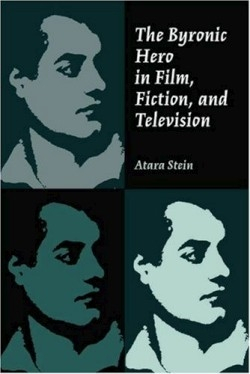The Byronic Hero
In Film Fiction and Television
Brooding, dark, and sardonic, the outsized heroes of Byron’s great poems “Childe Harold” and “Manfred” are rebellious individuals who live by their own moral codes. The spawn of these Byronic heroes populate not only Victorian literature like Wuthering Heights and Melmoth the Wanderer but also films and television shows ranging from Clint Eastwood’s spaghetti westerns to Star Trek and Angel.
In this elegant literary and cultural study, the author traces the development of the Byronic hero from Byron’s swaggering originals to Schwarzenegger’s Terminator character and Anne Rices Vampire Lestat. With a stroke of genius, she extends her portrait to include Byronic heroines in novels ranging from Emily Bront’s Catherine Earnshaw to Hardy’s Eustacia Vye, plus Sarah Conner of Terminator 2 and Ellen Ripley of the Alien movies (she could have also included Tess of the d’Urbervilles).
Stein teaches English at California State University, Fullerton; her articles on the development of the Byronic hero have appeared in Popular Culture Review, Philological Quarterly, and other periodicals. She opens this eloquent examination with a definition against which she measures all contemporary manifestations of this character: “The Byronic hero is an outlaw and an outsider who defines his own moral code, often defying oppressive institutional authority, and is able to do so because of his superhuman or supernatural powers, his self-sufficiency and independence, and his egotistical sense of his own superiority.”
Although this definition fits the heroes of Eastwood’s Dirty Harry movies, by the time he made Unforgiven the film interpretation of the Byronic hero had changed. In that film, the hero had been thoroughly humanized and stripped of his outlaw glamour. Byronic heroes also strut the stages and recording studios of contemporary music, although their persona differs from the arrogant and blustering Manfred. Rock stars like Morrisey and the late Kurt Cobain display the moodiness, melancholy, self-absorption, and self-torment that form the underside of Byron’s heroes.
Finally, these heroic characters can be seen on the small screen. Stein compares the Q character from Star Trek: the Next Generation with some of Byron’s most memorable heroes. “Like Manfred and Lucifer,” she writes, “Q is completely contemptuous of humankind, deeming them inferior and puny in all respects.”
Like any good interdisciplinary work, Steins brilliant book captures the depth of a particular idea—in this case, the Byronic hero—and with careful attention to detail, style, and cultural context, she skillfully develops the ways that popular culture develops this idea. Steins exceptional study inspires not only a fresh reading of Byron but also a careful look at cultural forms to see where Byron’s ideas continue to be reflected.
Reviewed by
Henry L. Carrigan
Disclosure: This article is not an endorsement, but a review. The publisher of this book provided free copies of the book to have their book reviewed by a professional reviewer. No fee was paid by the publisher for this review. Foreword Reviews only recommends books that we love. Foreword Magazine, Inc. is disclosing this in accordance with the Federal Trade Commission’s 16 CFR, Part 255.

